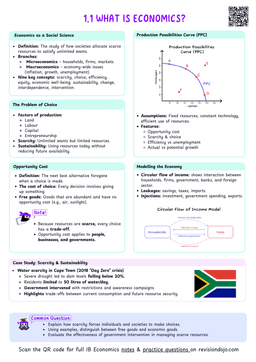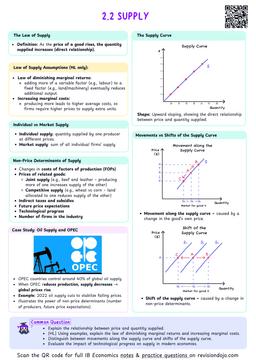Market Equilibrium
When quantity demanded is equal to quantity supplied, and there is no tendency for the price to change.
On a graph, this point is called the equilibrium point and it determines the equilibrium price and equilibrium quantity (see Figure 1 below).

Figure 1 showcases the market for $Pencils$, with consumers having a demand shown by curve $D$ and producers having a supply shown by curve $S$ on the diagram below.
Consider the market at price $P_1$. Here the quantity demanded is $Q_1$ and the quantity supplied is $Q_2$.
- At this high price, the quantity demanded of the good is less than the quantity supplied.
- Therefore there is excess supply in the market, or surplus.
Surplus
The extra supply that results when quantity supplied is greater than quantity demanded.
Students often think surplus is caused by "overproduction."
While true in part, the real issue is that the price is too high, discouraging consumers from purchasing the product.
Similarly, consider $P_2$. Here the quantity demanded is $Q_2$ and the quantity supplied is $Q_1$.
- At this low price, the quantity demanded of the good is more than the quantity supplied.
- Therefore there is excess demand in the market, or shortage.
Shortage
The excess of quantity demanded over quantity supplied.
Excess supply and excess demand lead to market equilibrium
Market Equilibrium
When quantity demanded is equal to quantity supplied, and there is no tendency for the price to change.



